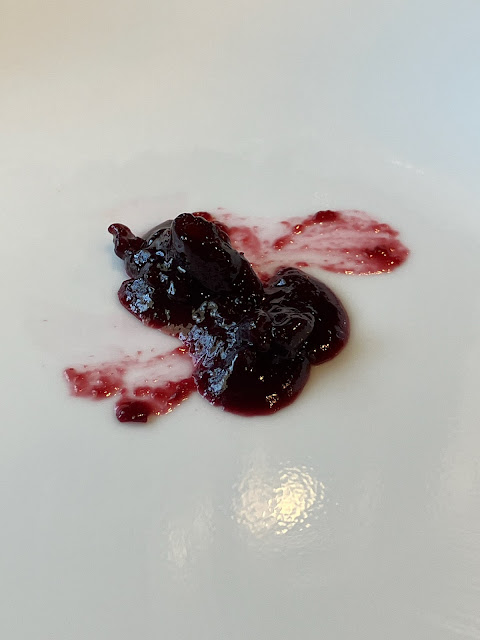It's that time of the year again.
The plum tree in the back yard produced a crop of fruit again, although not nearly as much this year as last. As such, to make this year's batch of jam I decided to risk a heretical move and buy some store-bought fruit to make up the difference.
Do what you must to make me pay for these crimes, but know that I have already won.
And speaking of crime scenes, getting the pits and stems out of these cherries is sure a task.
Since the cherries weren't all ripening at once, I filled up a gallon bag with the softest ones and kept the stragglers to snack on.
So into the freezer they go, both to store them for a few weeks while the last of the plums come off the tree (also going into the freezer) and for the ice to help break up the flesh of the fruit.
And on the other end of those few weeks, the freezer did its job nicely.
In the end I only got about 3/4 of a gallon of plums, so it was a good thing I picked up the cherries.
Now while the ice did a decent job of starting to break up the fruit, it didn't exactly reduce them to a smooth pulp, so that task comes next.
I'm definitely buying an immersion blender for next year's batch.
Anyway once the cherries were minced I ended up with 3qt of purée.
And I learned my lesson from making a no-sugar jam last year, and decided to add sugar this year. Not quite as much as you'd use for a full-sweetness jam, but enough to take the tart edge off.
4 cups was enough to get things to a nice sweetness with just the cherries, though I ended up adding a 5th later once the plums were mixed in.
Speaking of mixing things in, the one major downside of buying fruit at the store is that they don't include the flavour; you have to buy that separately.
2tsp of this stuff was enough to get the purée tasting like cherries instead of unidentified vegetal matter, which was a welcome improvement. Honestly I could probably add this stuff to iceberg lettuce and get the same effect.
Now while I had pitted the cherries before freezing, I left the plums intact, so they needed to part with their pits.
And after a trip through the food processor, I ended up with another 2qt of purée.
And with a bit more sugar (the extra cup I mentioned previously) and running a bit of water through the foot processor to clear out the remaining fruit shrapnel brought us up to about 5.5qt total.
So onward with the next artificial augmentation: pectin. I'm honestly not sure if I really need to add any since I am including the skin, but it's cheap and doesn't do any harm.
It just gets whisked in and then it's into the pot to boil up, in two batches since it can tend to foam up if you heat it a little too quickly.
It sure is starting to look like jam.
I decided to go for 215f, since getting to 220f was taking absolutely forever and I like my jam to be a bit on the soft side.
I did the plate test and it was looking plenty jammy, so I rolled with it.
So it's into the jars with it.
And then the water bath canning.
In two batches, again.
And after cooling off a bit, yeah, I'd say that set just fine.
10 jars is a little short of what I was hoping for, and quite a bit less than last year, but I'll take it.
I think I might add some cherries to next year's batch too, even if I do end up with more plums from my tree, as the extra colour it adds really gives the jam a great appearance compared with the somewhat pale pink that just the plums alone delivered last year. Thankfully I have plenty of cherry extract left, so I'll be well prepared for the flavour-not-included commercial fruit.



















































